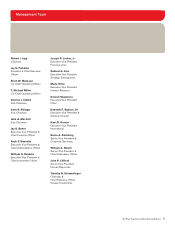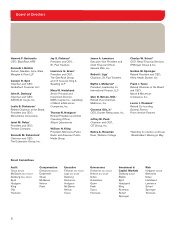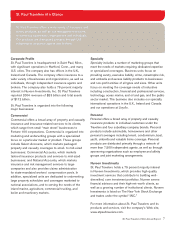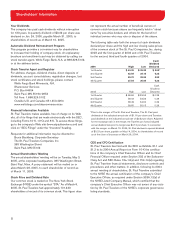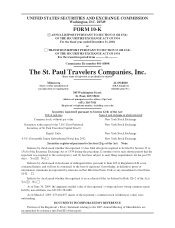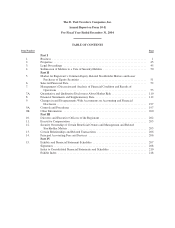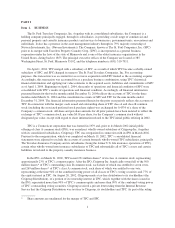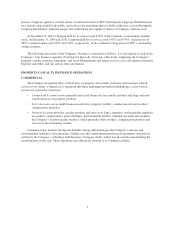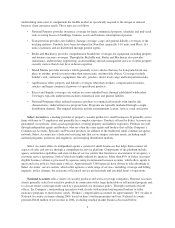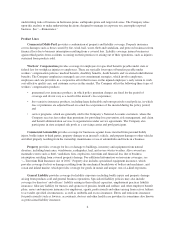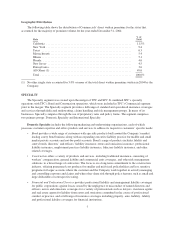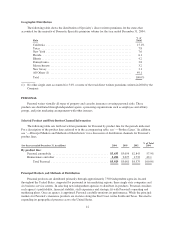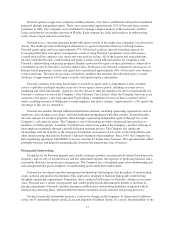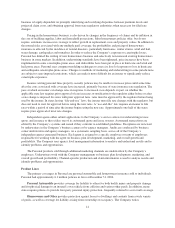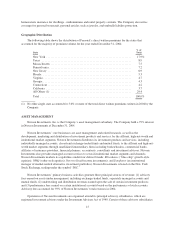Travelers 2004 Annual Report Download - page 17
Download and view the complete annual report
Please find page 17 of the 2004 Travelers annual report below. You can navigate through the pages in the report by either clicking on the pages listed below, or by using the keyword search tool below to find specific information within the annual report.National Accounts also includes the Company’s commercial residual market business. The Company’s
commercial residual market business sells claims and policy management services to workers’ compensation and
automobile assigned risk plans and to self-insurance pools throughout the United States. The Company services
approximately 35% of the total workers’ compensation assigned risk market. The Company is one of only two
servicing carriers that operate nationally. Assigned risk plan contracts generated approximately $212 million in
fee income in 2004.
Commercial Other includes the Special Liability Group (which manages the Company’s asbestos and
environmental liabilities); the reinsurance, health care, and certain international runoff operations; and Gulf,
which was placed into runoff during the second quarter of 2004. Certain business previously written by Gulf is
now being written in Commercial Accounts and in the Company’s Specialty segment. Gulf provided specialty
coverages including management and professional liability, excess and surplus lines, environmental, umbrella
and fidelity. Gulf also provided insurance products specifically designed for financial institutions, the
entertainment industry and sports organizations.
Pricing and Underwriting
Pricing levels for Commercial property and casualty insurance products are generally developed based upon
the frequency and severity of estimated losses, the expenses of producing business and managing claims, and a
reasonable allowance for profit. Commercial has a disciplined approach to underwriting and risk management
that emphasizes a profit-orientation rather than premium volume or market share.
Commercial has developed an underwriting and pricing methodology that incorporates underwriting, claims,
engineering, actuarial and product development disciplines for particular industries. This approach is designed to
maintain high quality underwriting and pricing discipline. It utilizes proprietary data gathered and analyzed with
respect to its Commercial business over many years. The underwriters and engineers use this information to
assess and evaluate risks prior to quotation. This information provides specialized knowledge about specific
industry segments. This methodology enables Commercial to streamline its risk selection process and develop
pricing parameters that will not compromise Commercial’s underwriting integrity.
For smaller businesses, Select Accounts uses a process based on industry classifications to allow agents and
field underwriting representatives to make underwriting and pricing decisions within predetermined
classifications, because underwriting criteria and pricing tend to be more standardized for these smaller
exposures.
A significant portion of Commercial business is written with large deductible insurance policies. Under
some workers’ compensation insurance contracts with deductible features, the Company is obligated to pay the
claimant the full amount of the claim. The Company is subsequently reimbursed by the contractholder for the
deductible amount, and is subject to credit risk until such reimbursement is made. At December 31, 2004,
contractholder receivables and payables on unpaid losses associated with large deductible policies were each
approximately $4.21 billion. Retrospectively rated policies are also used for workers’ compensation coverage.
Although the retrospectively rated feature of the policy substantially reduces insurance risk for the Company, it
does introduce credit risk to the Company. Receivables on unpaid losses from holders of retrospectively rated
policies totaled approximately $267 million at December 31, 2004. Significant collateral, primarily letters of
credit and, to a lesser extent cash collateral and surety bonds, is generally requested for large deductible plans
and/or retrospectively rated policies that provide for deferred collection of deductible recoveries and/or ultimate
premiums. The amount of collateral requested is predicated upon the creditworthiness of the customer and the
nature of the insured risks. Commercial continually monitors the credit exposure on individual accounts and the
adequacy of collateral.
The Company continually monitors its exposure to natural and manmade peril catastrophic losses and
attempts to mitigate such exposure. The Company uses sophisticated computer modeling techniques to analyze
5


